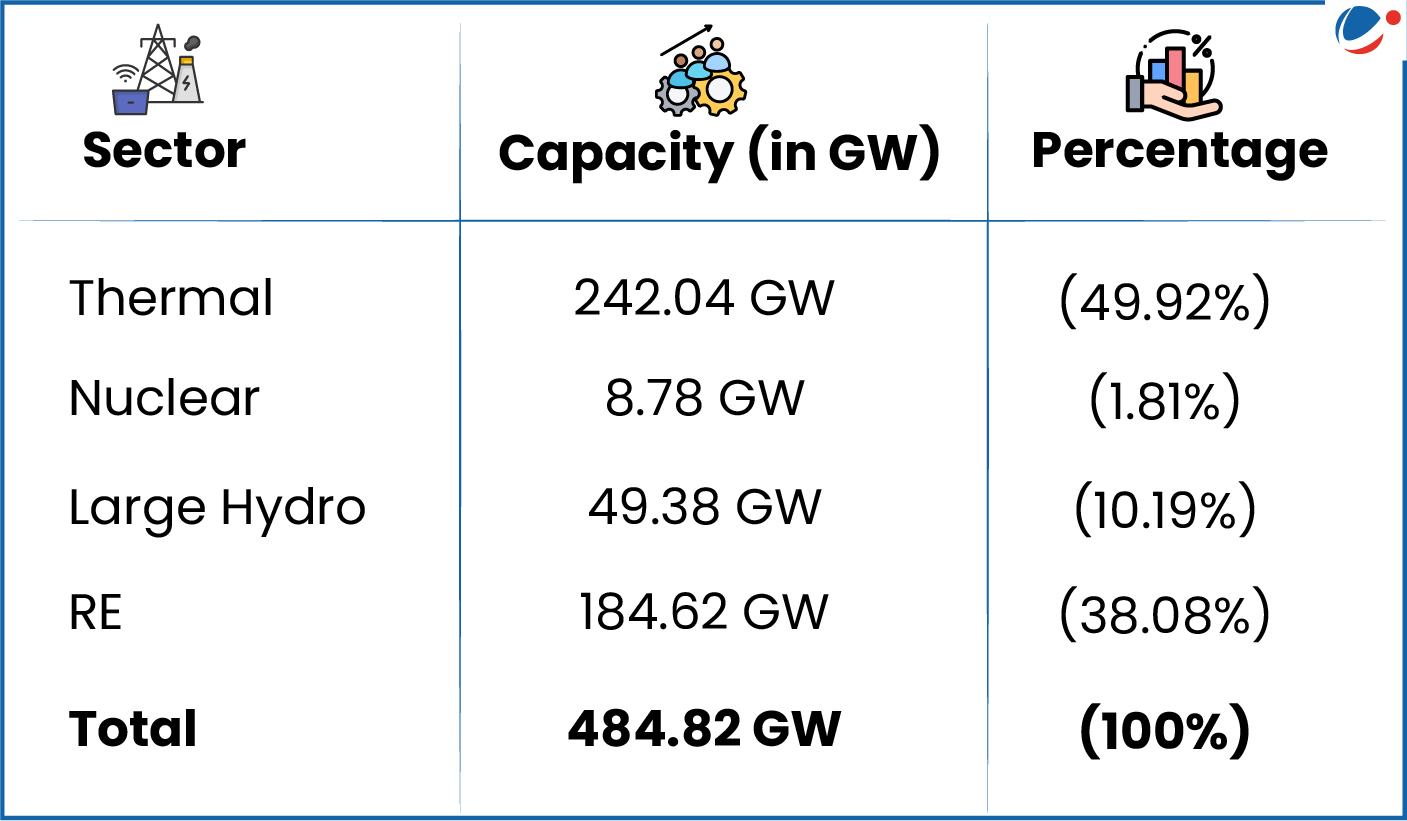According to Ministry of New and Renewable Energy, India has reached 484.82 GW of total installed electricity capacity, with 50.08% electricity from non-fossil fuel sources.
- India achieved the target of 50% non-fossil fuel installed capacity – five years ahead of the target set under its Nationally Determined Contributions (NDCs) to the Paris Agreement.

Key Initiatives behind the rise in India’s Renewable Energy Capacity
- PM Surya Ghar scheme: Facilitated around 7 lakh rooftop solar installations.
- PM-KUSUM: Provided solar-powered pumps to farmers, enabling energy-secure agriculture.
- Manufacturing Expansion: Scaling up of domestic solar PV and wind turbine production through Production Linked Incentive (PLI) Schemes.
- Transmission Infrastructure Enhancement: Major investments in inter-state transmission systems to evacuate power from renewable-rich states.
- Green Energy Open Access Rules 2022: Promotes renewable energy access for consumers.
- Foreign Direct Investment (FDI) Policy: 100% FDI permitted under automatic route in renewable sector.
- Viability Gap Funding (VGF): VGF scheme for implementation of offshore wind energy projects.
Significance of the achievement
- Global Climate Leadership: India proves that developing countries can lead the clean energy transition without compromising economic growth.
- Reduced Import Dependence: Enhances energy sovereignty and reduces vulnerability to global fuel price volatility.
- Diversified Energy Portfolio: Creates a resilient energy mix with multiple renewable sources.
- Job Creation and Industrial Growth: Massive employment generation across the renewable energy value chain.






